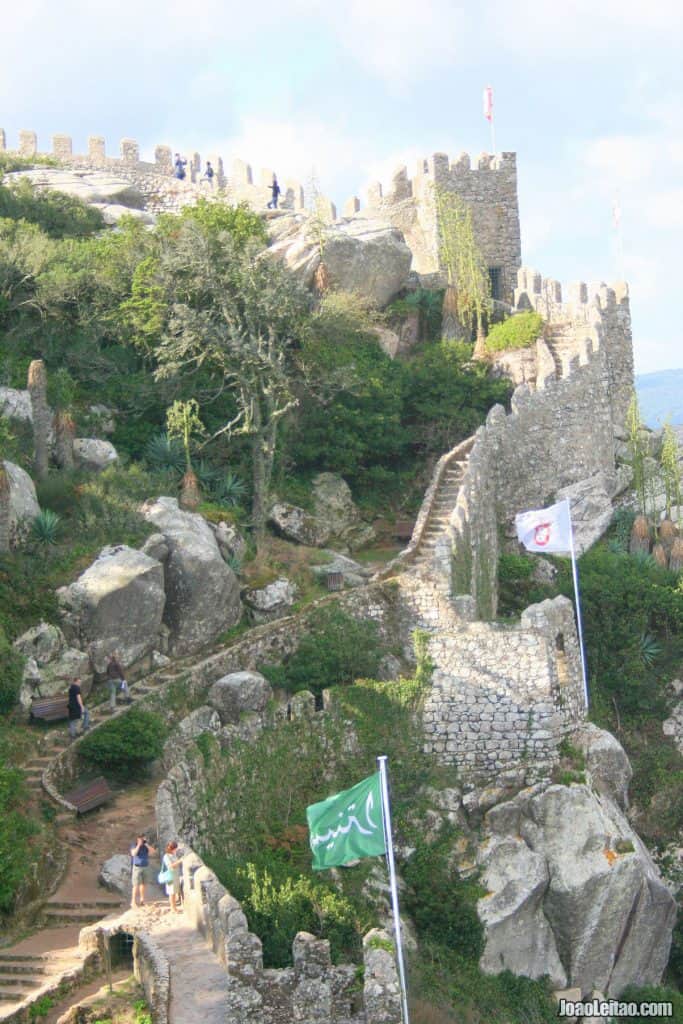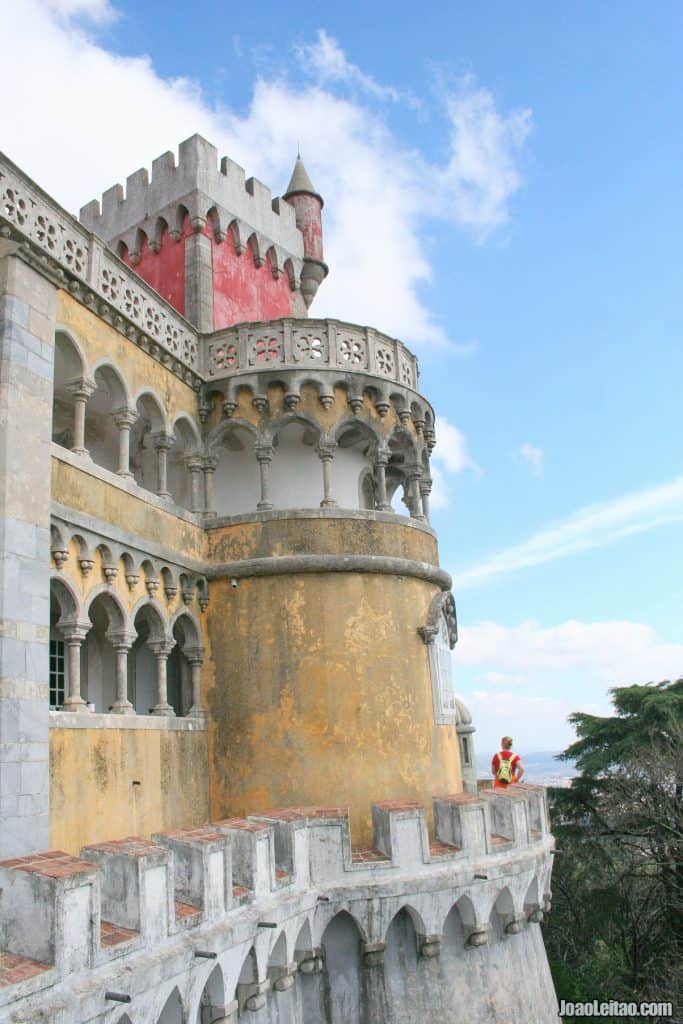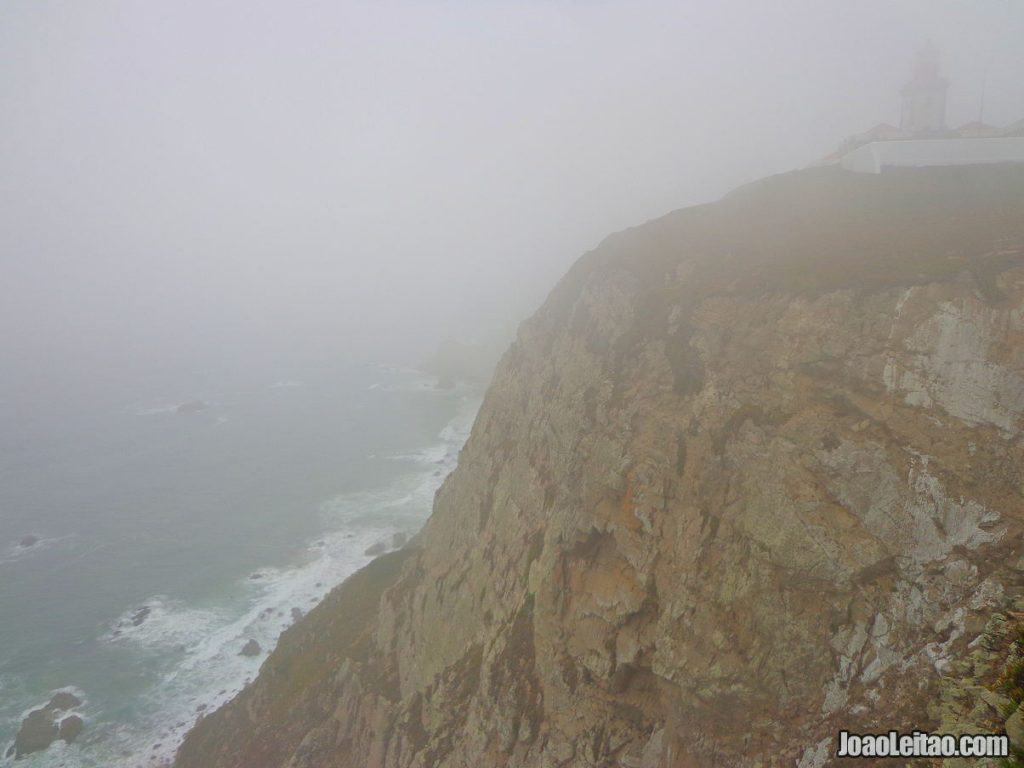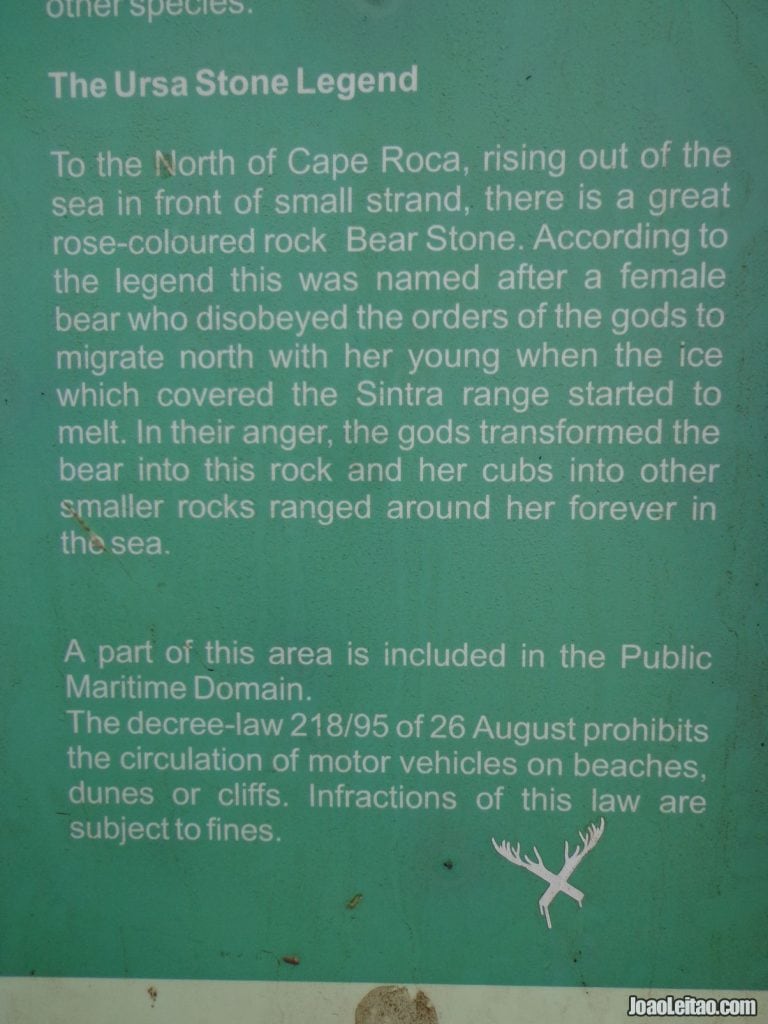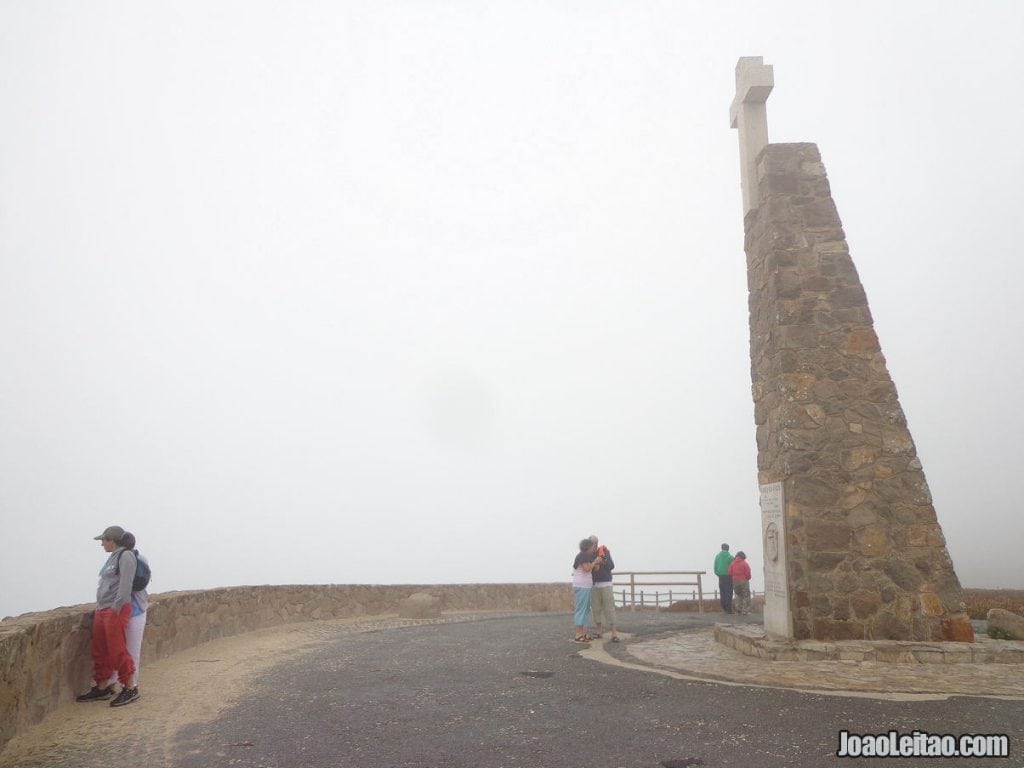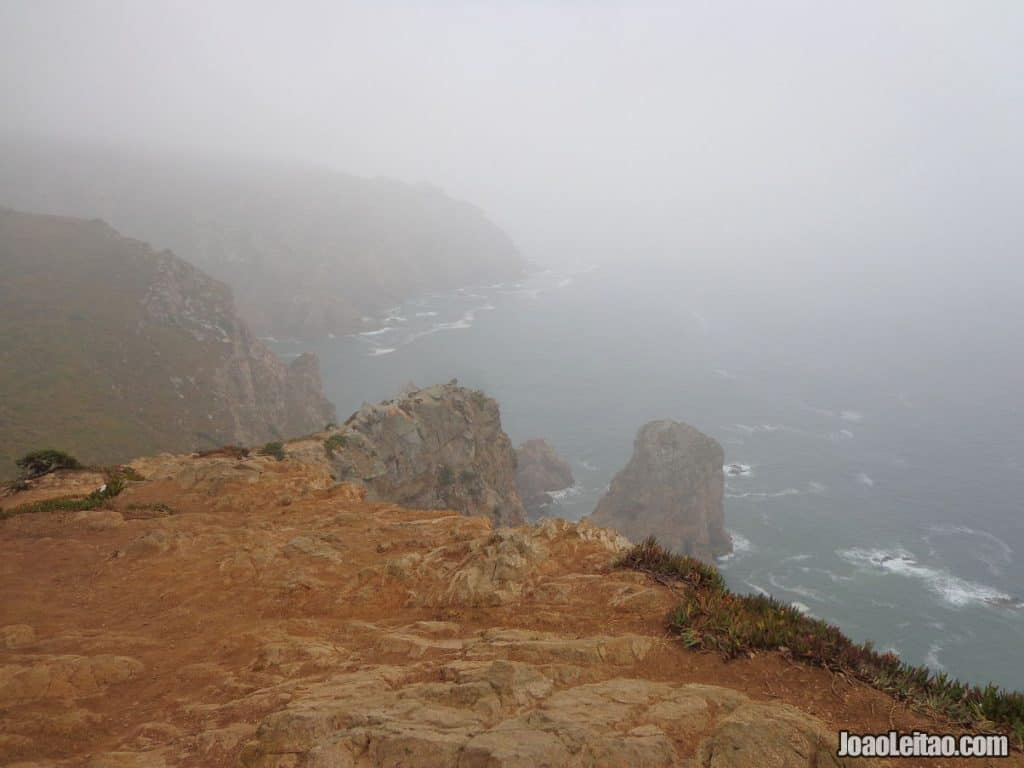Table of Contents
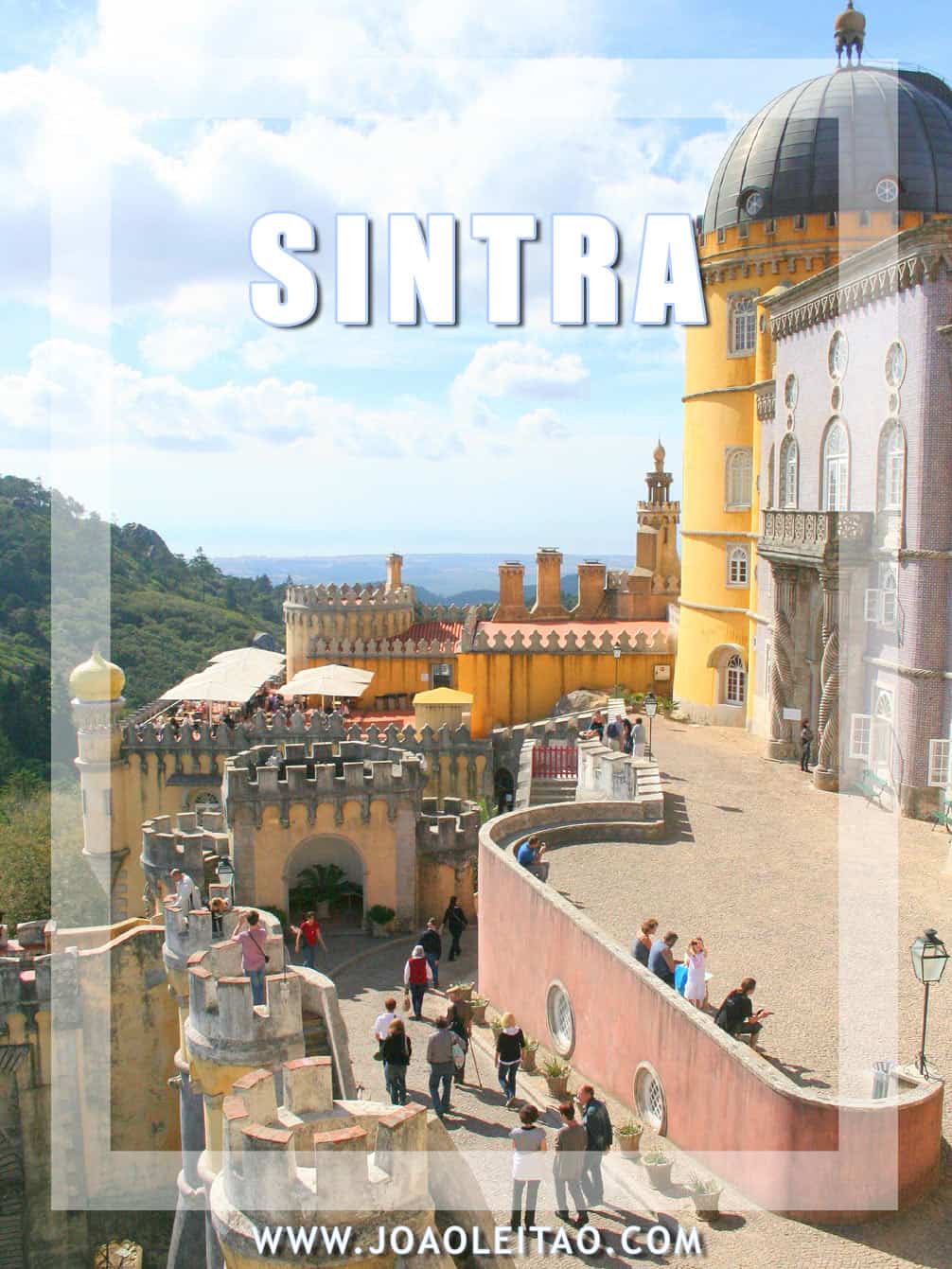
Sintra is a town that looks straight out of a fairytale, with majestic monuments dotting the lush green landscape.
The Sintra Palace is one of the most famous Portuguese monuments in the world, often compared to the famous German Neuschwanstein Castle which inspired Walt Disney’s fictional castles.
In Sintra, you’ll see traces of different historical periods, sometimes all in the same spot. You can’t visit Portugal and not go to Sintra, one of the top destinations in the country.
Pena Palace is the town’s most famous monument. Together with Castelo dos Mouros, it’s located on the highest point. Its shape and colors make it a unique palace. One of the most interesting facts about this palace is that, unlike most people think, this was the first romantic palace in Europe, built 30 years before the iconic Schloss Neuschwanstein at Bavaria.
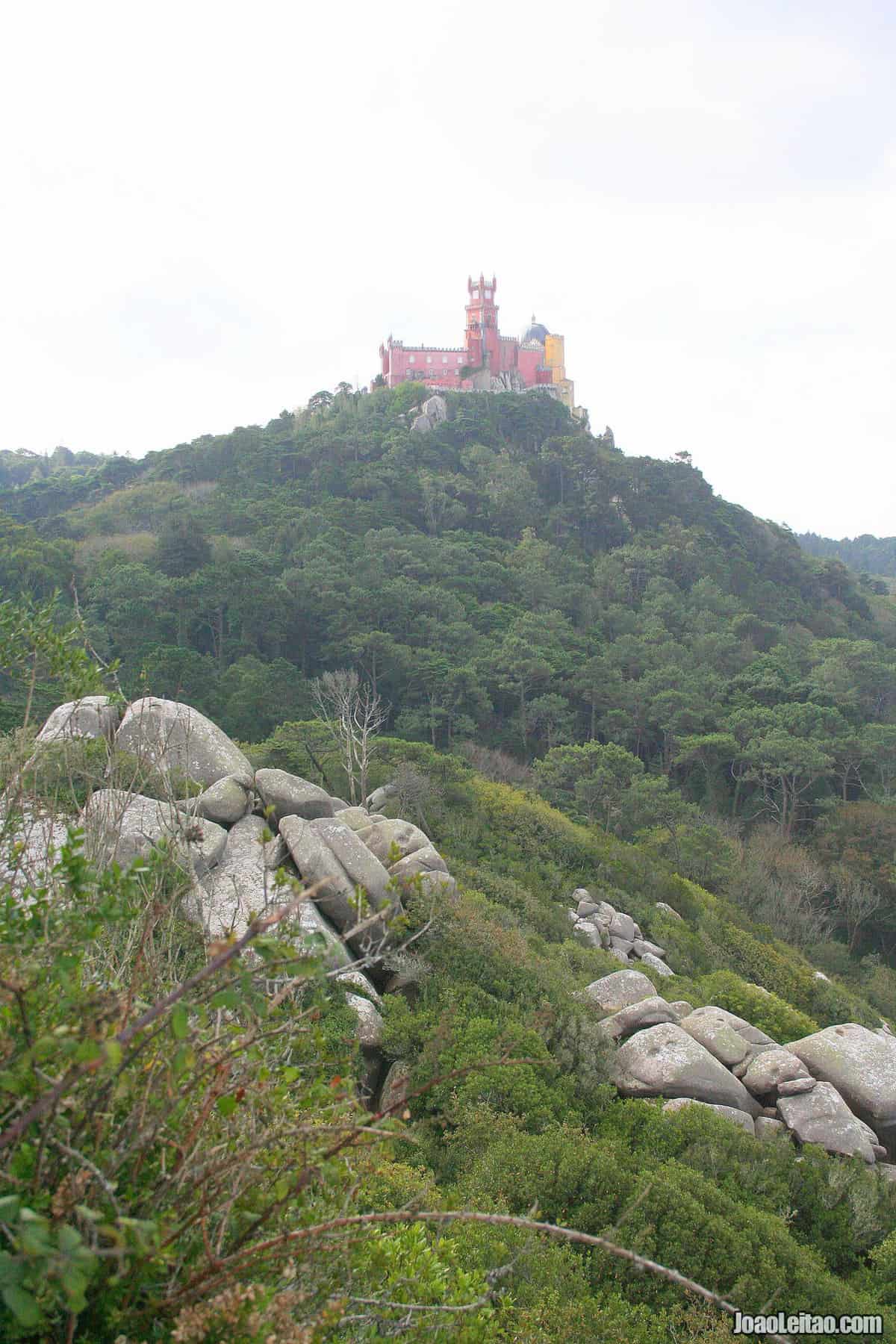
In 2007, the Pena Palace in Sintra was elected as one of the seven wonders in Portugal. In addition to Pena, you can visit other palaces in Sintra including Palácio de Seteais (Seteais Palace), Palácio de Monserrate (Monserrate Palace), and Palácio Real de Queluz (Queluz Royal Palace). All of them are valuable architectural masterpieces surrounded by well-manicured gardens.
On this page I share with you a practical city guide with the best places to visit in Sintra.
Sintra Portugal: What you need to know
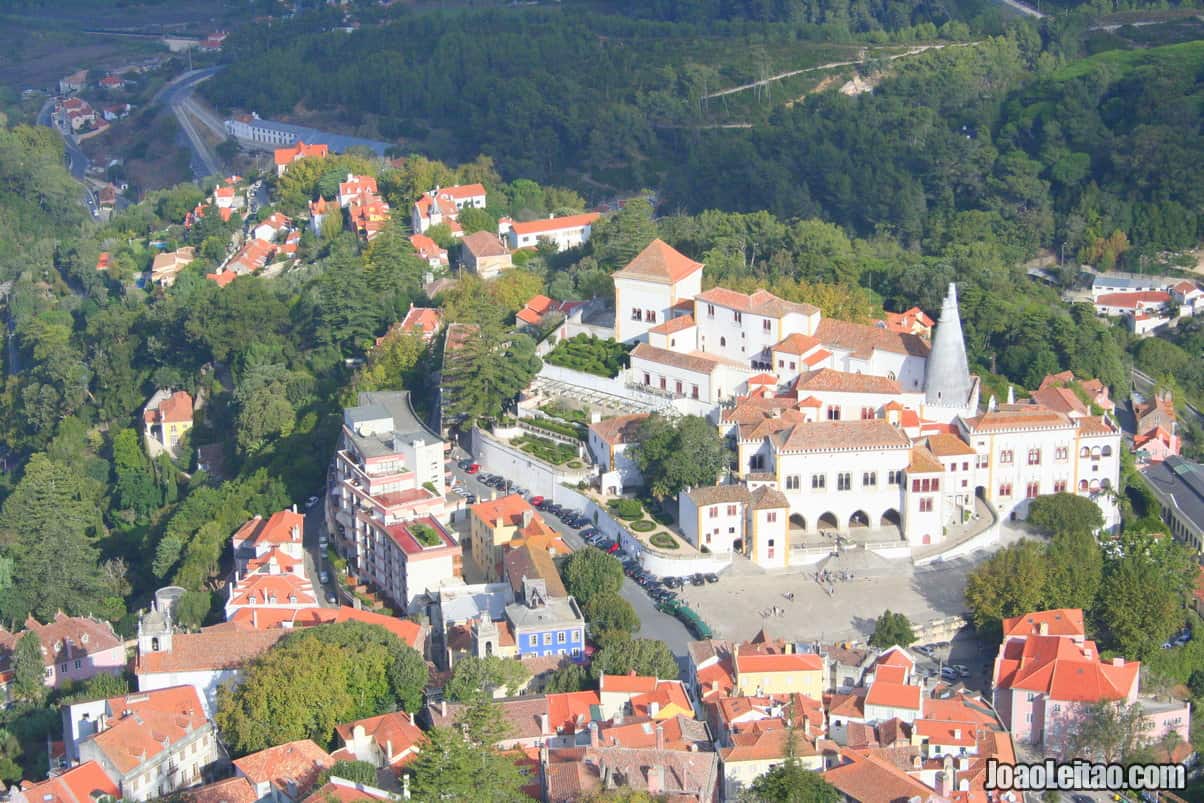
Thirty kilometers west of Lisbon, Sintra is a small town at the foot of the mountains with the same name, stretching towards the Atlantic Ocean until it ends at Cabo da Roca, the westernmost point of mainland Europe.
Despite the existence of the Castelo dos Mouros (Moors Castle) since the 8th century, the town only became notorious in the second half of the 19th century when it became the favorite retreat of prominent Portuguese figures.
They built palaces in town inadvertently creating the romantic atmosphere in Sintra that would lead the town to become a UNESCO World Heritage Site.
Its historic center is like an open-air museum, with charming villas, History-infused alleys, fountains and gardens.
Out of town but nearby, the Castelo dos Mouros and the larger palaces, including the Pena Palace, are surrounded by the mountain’s natural beauty and the amazing views you get from the top.
Artists and poets like the British Lord Byron and the Portuguese Eça de Queiroz have lived and worked there inspired by the same natural wonders that now attract tourists on a day trip from Lisbon, connected to Sintra by a suburban train line.
Best time to go to Sintra
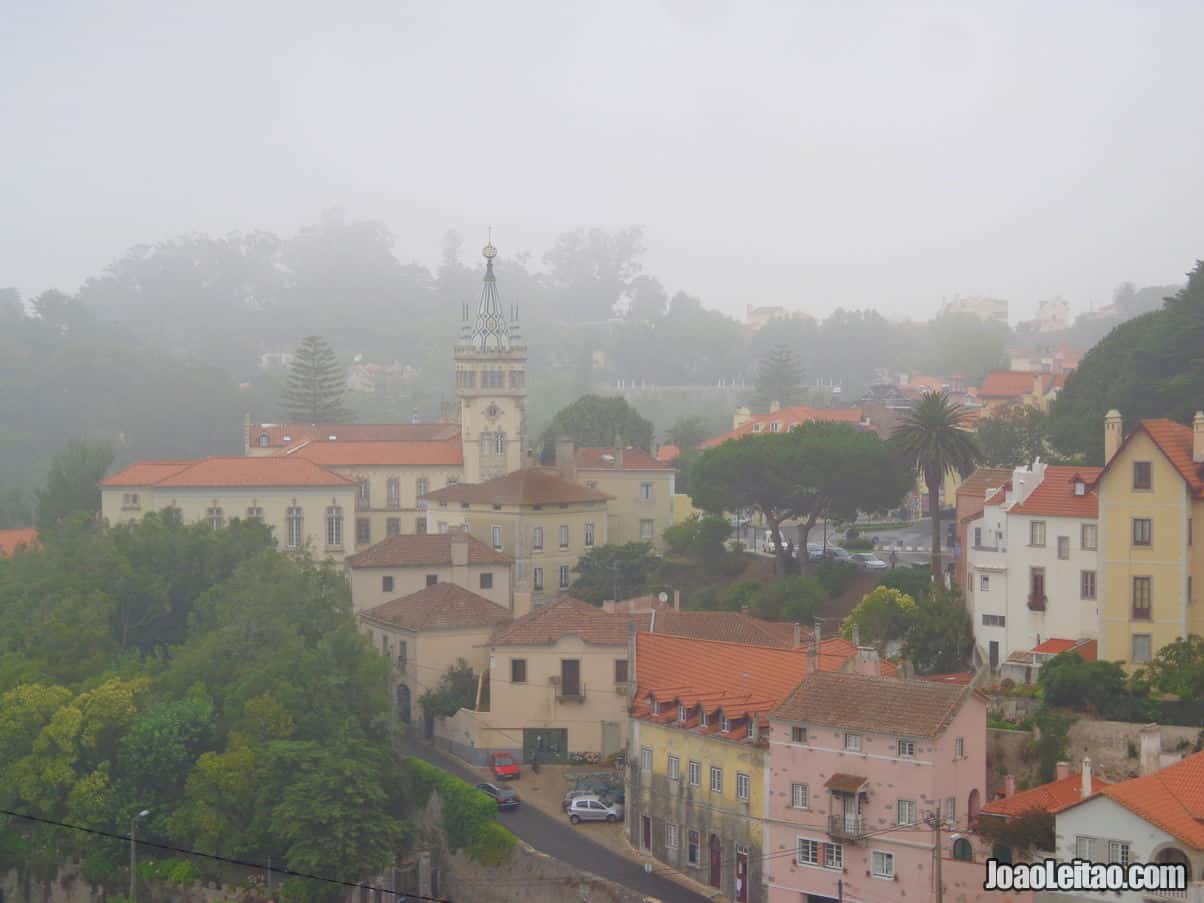
In order to know the best time to go to Sintra, gather all the necessary information about the seasons and the best weather. The best time for holidays in Sintra is during spring and summer.
The best time to visit Sintra is between April and June and between September and October when temperatures are milder.
During winter, Sintra can get rainy and foggy.
Top things to do in Sintra
What to visit in Sintra.
- Castelo dos Mouros (Moors Castle)
- Palácio Nacional da Pena (Pena National Palace)
- Palácio Nacional de Sintra (Sintra National Palace)
- Quinta da Regaleira (Regaleira Estate)
- Palácio de Seteais (Seteais Palace)
- Palácio de Monserrate (Monserrate Palace)
- Chalet da Condessa d’Edla (Countess of Edla Chalet)
- Convento dos Capuchos (Capuchin Convent)
- Palácio Nacional de Queluz (Queluz National Palace)
- Museu de Arte Moderna (Museum of Modern Art)
- Fonte da pipa
- Cruz Alta viewpoint
- Farol do Cabo da Roca
- Aroueira Beach
- Menires da Barreira (Megalithic Monument of Barreira)
- Tolo do Monge
Map of attractions in Sintra
Map with the most popular attractions in Sintra.
Quick travel tips to visit Sintra
- Get your Pena Palace & Park skip-the-line entrance ticket in advance.
- Wake up early and be the first at monuments, museums, or other sites.
- Go up to the Pena Palace for the best panoramic view of the area.
- Ger your Castle of the Moors fast track ticket in advance.
- Although it’s expensive to visit all the monuments, try going to as many as you can.
- If you want to stay in the town center and your budget is above the average, book the well rated Sintra Boutique Hotel.
- Moon Hill Hostel is one of the cheapest hotel options in Sintra town center. You get a dorm room with breakfast for 21 Euros per night.
- Before you go don’t forget to check the weather in Sintra.
- Take care of your belongings.
- You can travel to Sintra independently. Take the train from Rossio Station in Lisbon.
- If you don’t have much time to organize and travel independetly, get yourself a Sintra and Cascais full day group tour from Lisbon.
- In Sintra county, there are other gorgeous places to visit. Don’t miss Colares and the famous Cabo da Roca, the westernmost point of mainland Europe.
- If you arrive in Sintra and want to have everything organized, buy the Sintra, Cabo da Roca and Cascais full-day tour.
- Take public transportation to go up the hill, so you can easily visit all the sites without getting too tired
- After a pleasant stroll through this charming town, you must stop for the typical local pastry: travesseiros de Sintra (“travesseiros” means pillows in Portuguese and it’s an egg cream-filled puff pastry) at the historical Piriquita pastry shop that’s been in business for over 150 years.
Best places to visit in Sintra
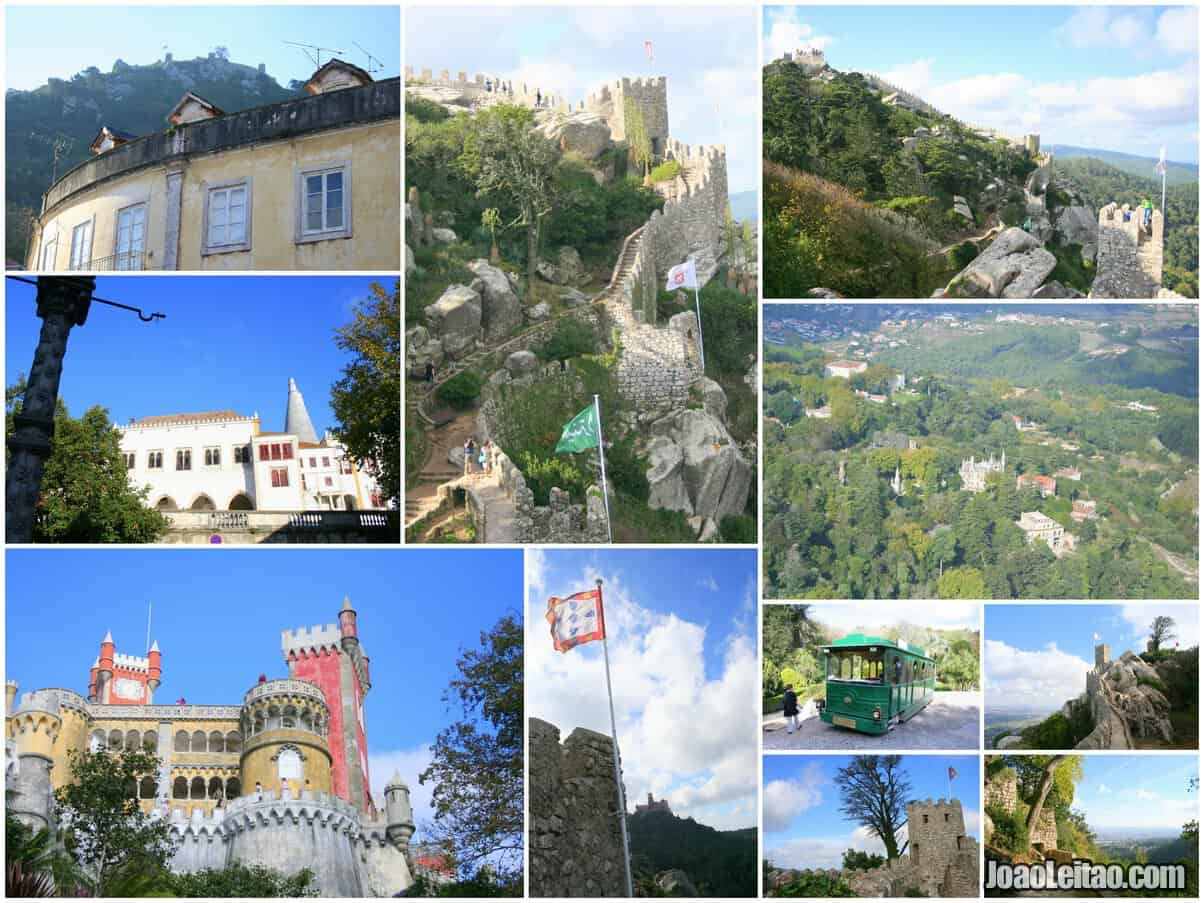
Sintra is a place full of mystical energy. It’s a sacred place and the chosen location for countless secret associations for their gatherings and meetings. Yes, Sintra exudes energy. It’s an extraordinary place and you feel it. One trip to Sintra will easily take up a full day.
Seeing things at a slower pace, account for at least two days to see everything slowly and take all the time you need to visit all the sites, scattered throughout the area. If you only have a few hours or a day, stick to the Castelo dos Mouros, the town center, and the Pena Palace.
If you want to know what to see in Sintra, I organized a list of places to visit so that you can plan your trip and maximize your time during your holidays.
Top 10 places to visit in Sintra.
1. Palácio da Pena (Pena Palace)
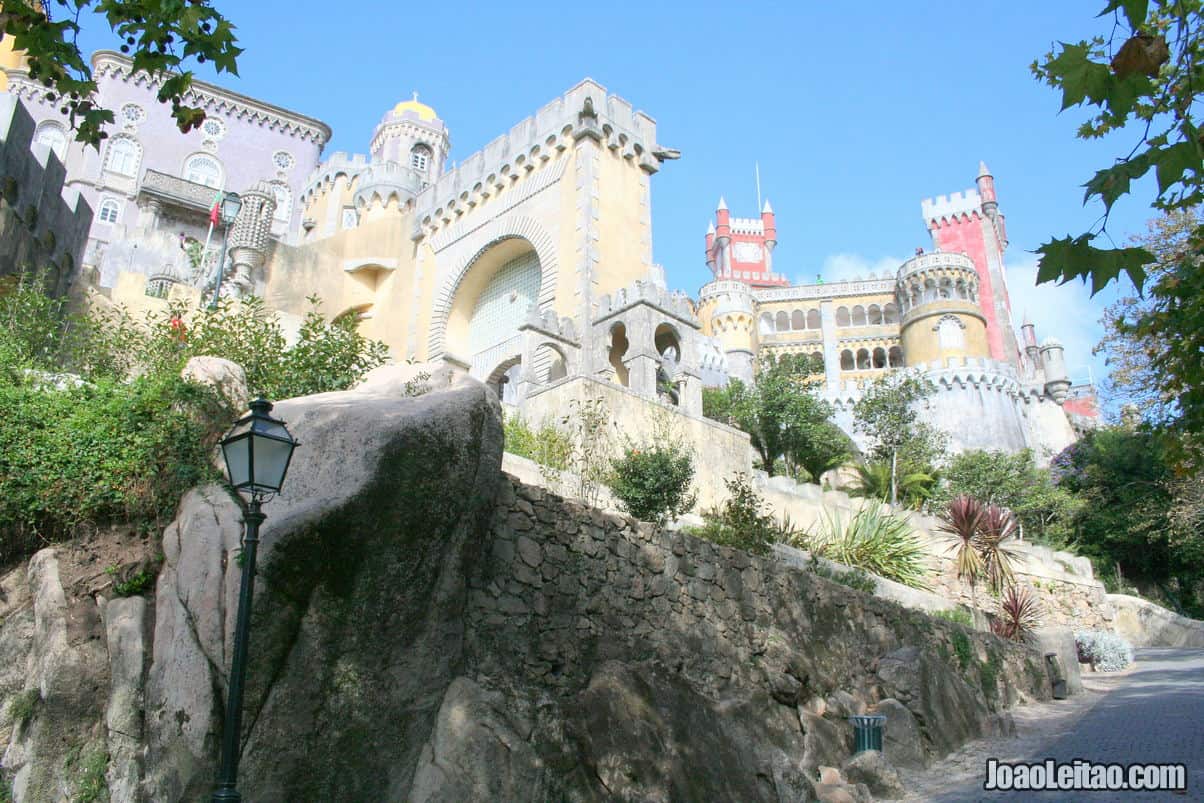
There used to be a monastery at this location, damaged by a thunderstorm and later by the destructive 1755 earthquake that left it in ruins.
In 1838, King Fernando II, who had always been fascinated by the location, decided to build a palace that would be used as the Portuguese royal family’s summer home.
King Fernando II handed the job to Wilhelm Ludwig von Eschwege, a German architect, military man, and mine engineer, who supervised the construction of the palace together with the royal family between 1842 and 1854.
After King Fernando died, the palace was owned by his second wife, who sold it to King Luís, thus becoming a gathering place for the royal family again.
The palace’s design is undoubtedly an example of the Romantic period, a mix of styles including Neo-Gothic, Neo-Manueline, Neo-Renaissance, and Neo-Islamic, with references to other Portuguese iconic buildings like the Torre de Belém (Belém Tower).
2. Castelo dos Mouros (Moors Castle)
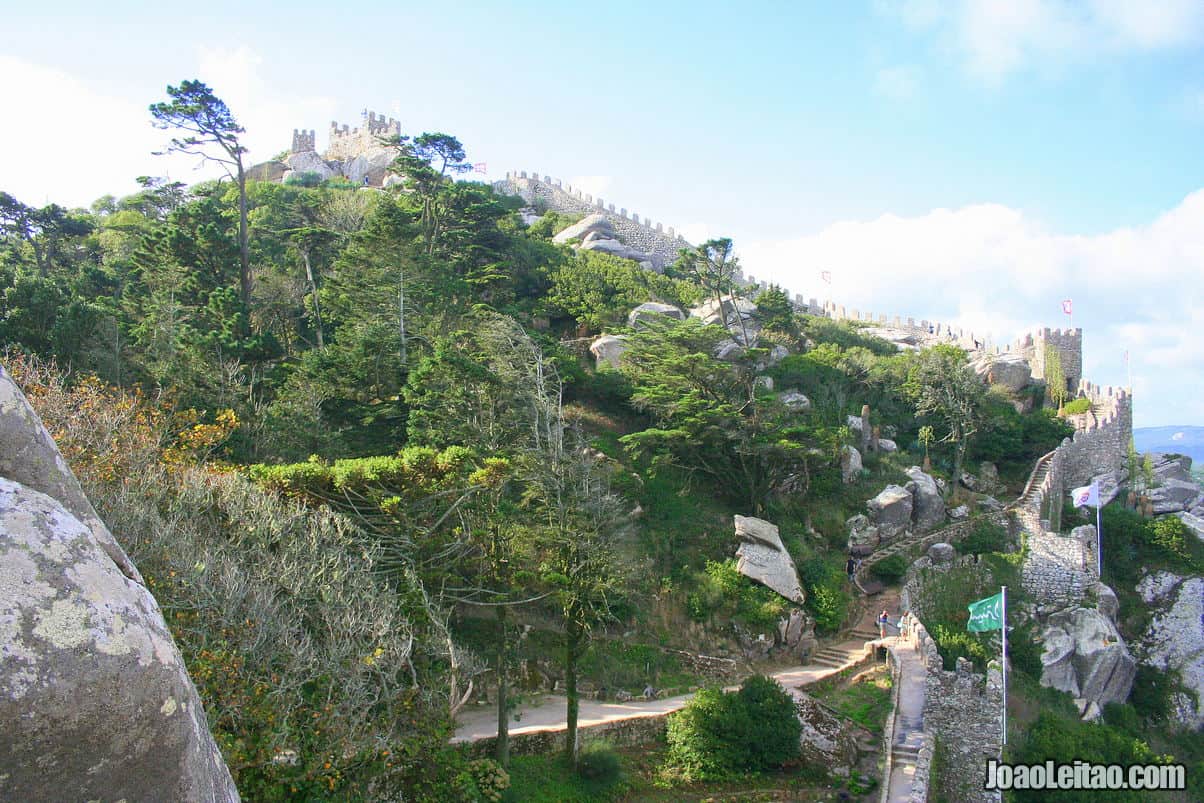
When you reach Sintra and the historic center, you immediately see the Castelo dos Mouros, rising vertically atop the mountains that surround the town.
You can walk up there or drive up a winding road until you reach the parking lot steps from the castle.
The castle was built in the 8th century and expanded in the 9th century, and was taken over by the Christians after the reconquest of Lisbon in 1147.
The Moors just handed over the castle to the new rulers, without a fight. In the following years, the castle was restored and in the mid-14th century, it was completely rebuilt under the orders of King Fernando.
The castle’s military importance began to decline at the time and never recovered, leading the castle to become the ruined remains you can visit today.
The view from its walls and towers over Sintra town and the vast blue ocean are unforgettable. Admission is not free.
3. Palácio Nacional de Sintra (Sintra National Palace)
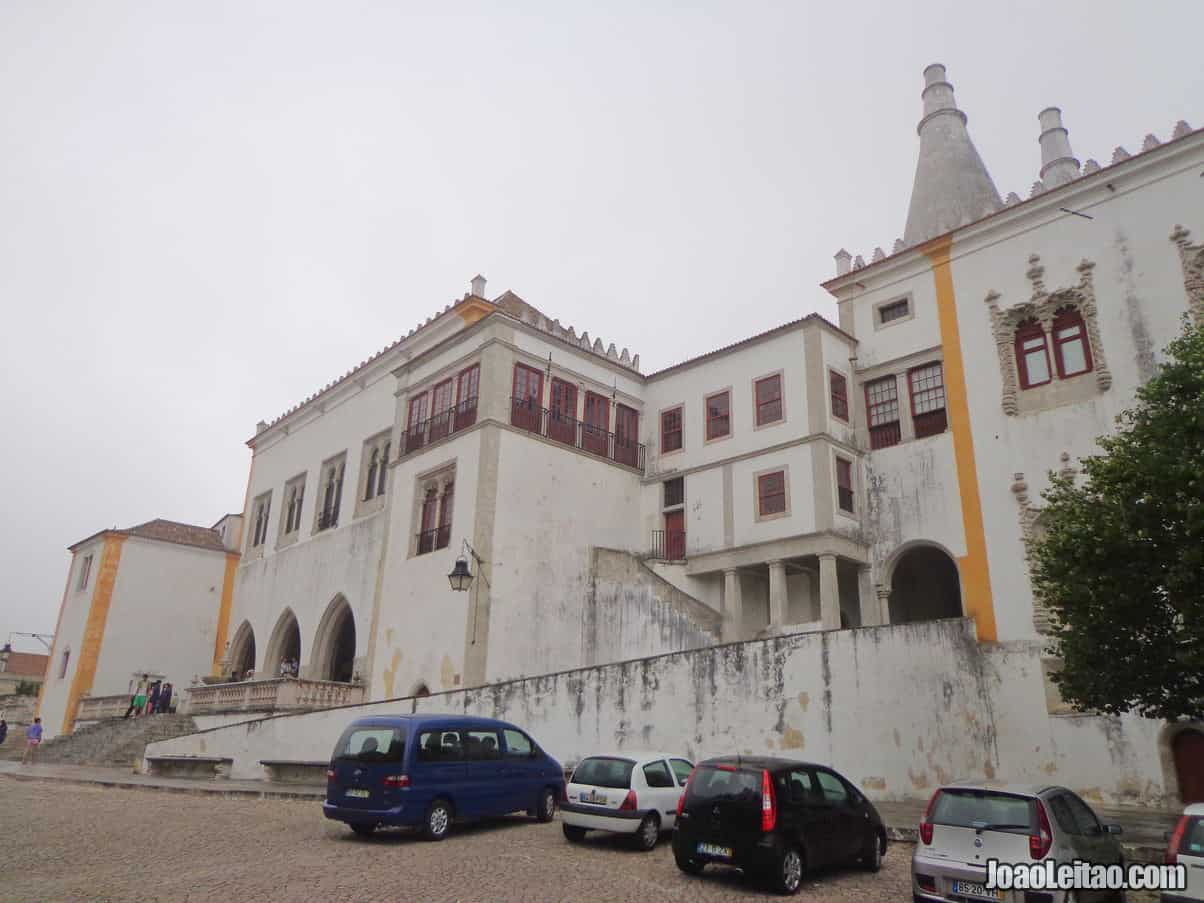
This palace in the center of Sintra has continuously grown from an existing structure built there at the time of Arab occupation.
The palace you see now is influenced by several styles including Medieval, Gothic, Manueline, Renaissance, and Romantic, and it was used by the Portuguese royal family until the implementation of the Republic in 1910.
The two massive chimneys, connected to the palace’s kitchen, are the two most notable features that became one of Sintra’s trademark images.
The palace’s austere exterior isn’t matched in style by its ostentatious interior.
Must-sees include the Sala dos Brasões (Hall of the Coats of Arms) with the shields of the 72 most important noble families in the 16th century, the Sala dos Cisnes (Hall of Swans) decorated with frescoes of swans, and the Sala do Galeão (Hall of the Galleon) shaped like a ship.
Don’t skip a visit to the palace’s chapel with the floor in Islamic mosaic.
4. Quinta da Regaleira (Regaleira Estate)
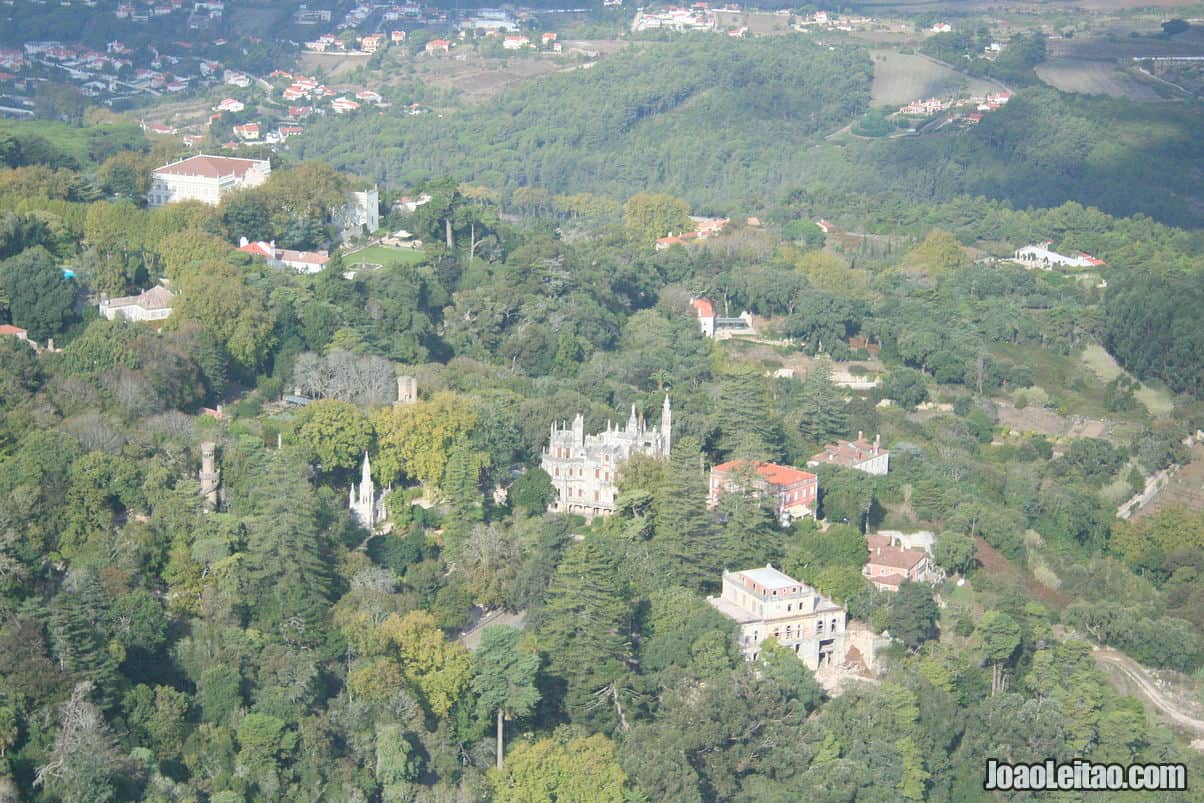
The Regaleira palace has become famous in recent years, in part because of its connection to mystical and esoteric elements.
The Poço da Iniciação (Initiation Well) is the property’s most striking feature: a spiral staircase with nine platforms, that allegedly represent Dante’s Divine Comedy’s nine circles of hell, heaven, or purgatory.
Quinta da Regaleira is an intriguing place, and if you visit Sintra you ought to come here.
Regaleira’s Viscountess owned the estate until the prosperous businessman Carvalho Monteiro bought it in 1892 and built the mansion that you see today. Under his guidance, the building influenced by Gothic, Romantic, Renaissance, and Manueline styles was made between 1904 and 1910.
The palace also includes mysterious symbols related to alchemy, the Templars, and Masonry. In 1942 the house was sold again and in 1987 it was bought by a Japanese company that never used the property. The city purchased the property in 1997.
Quinta da Regaleira is famous for its sumptuous gardens, the private chapel, the enigmatic tunnels, and the so-called “initiation towers.”
It’s open to the public and the Quinta da Regaleira Foundation organizes cultural events at the property.
5. Palácio de Seteais (Seteais Palace)
Marquês de Pombal (Marquis of Pombal) himself gave the land to build this palace, which would be the house for the Dutch consul Daniel Gildemeester.
The construction happened between 1783 and 1787 and the final result was one of the finest examples of late-18th-century Portuguese architecture. The consul passed away two years after the palace was finished and his widow sold the property to Marquês de Marialva (Marquis of Marialva).
In 1802, the palace was expanded under the supervision of Neoclassical architect José da Costa e Silva, who designed the Teatro Nacional de São Carlos (São Carlos National Theater, Lisbon’s Opera House).
After over one century of private ownership, the Government bought the palace in 1946. Since 1995 it’s been a luxury hotel, currently the Tivoli Palácio de Seteais hotel.
6. Palácio de Monserrate (Monserrate Palace)
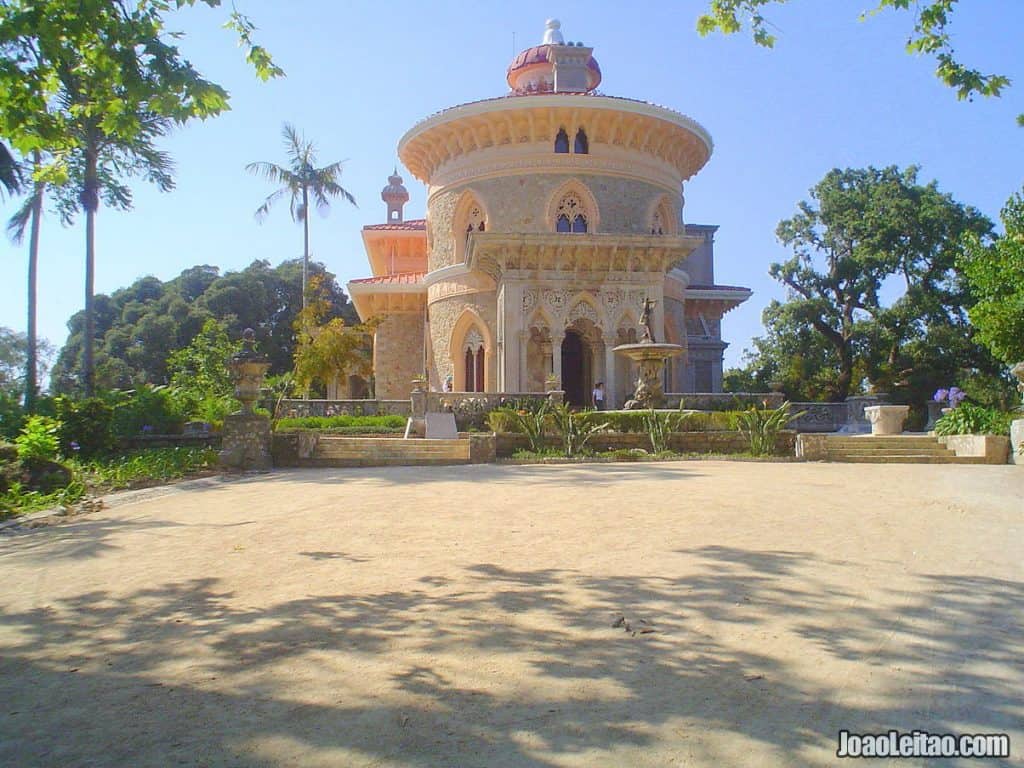
The Palácio de Monserrate (Monserrate Palace) is a bit further from Sintra’s historic center, about 3.5 km away. It was designed by Sir Francis Cook, an English man who dreamed of having a palace in the area.
The building is the same Romantic style you’ll find throughout Sintra, built in 1860. It replaced a Neo-Gothic mansion in ruins. With Gothic architectural influences and décor details inspired by Indian and Moorish styles, the Palace is surrounded by luxurious gardens with plants from all over the world.
By the mid-20th century, it was emptied and abandoned until the year 2000 when it was restored. It’s open for visitors now, and must-sees include the Salão de Música (Music Hall), which hosts recitals occasionally, and the kitchen.
7. Convento dos Capuchos (Capuchin Convent)
It’s a small Franciscan convent among the lush vegetation of the Sintra mountains, often called “O Convento da Cortiça” (Cork Convent) because of the wide use of this insulation material. It fits neatly in the surroundings, making use of the nearby rocks and incorporating them in the building.
It was originally built in 1560, then called Convento de Santa Cruz da Serra de Sintra (Convent of the Holy Cross in Sintra Mountain), and inspired Lord Byron’s poem Childe Harold’s Pilgrimage.
It’s located 7 km west of Sintra, surrounded by gorgeous natural lookouts that inspired generations of monks until 1834 when the Religious Orders were extinct and the convent was abandoned.
It was later bought by Sir Francis Cook, the first owner of Palácio de Monserrate, and in 1949 it became the property of the Portuguese government. It’s open to the public now.
8. Fonte da Pipa
This is a charming fountain in Sintra’s historic center. The first references to the water flowing here are from 1369 when a document mentions a resident from “fonte da pipa.”
However, the fountain we see now dates from the 18th century. It was built by order of Dr. Francisco José de Miranda Duarte. It’s decorated with a tile panel divided into four sections and has the coat of arms of the Portuguese Royal House.
Queen Maria ordered the water to be taken back to the fountain after two decades of being diverted to water nearby properties owned by Marquês de Pombal.
9. Cromeleque de Barreira (Megalithic Monument of Barreira)
The Megalithic Monument of Barreira was identified in 1961 and is located near the Museum Complex of S. Miguel de Odrinhas. It has 24 menhirs complemented by secondary monoliths.
The tallest ones are 4 meters high, but most of them are covered by vegetation or fallen. In some of them, you can see fractures. The site hasn’t been studied and is practically abandoned, despite being classified as a Place of Public Interest in 1993.
10. Chalet da Condessa d’Edla (Countess of Edla Chalet)
This chalet was built between 1864 and 1869 by King Fernando II and his second wife, the Countess of Edla. Her Swiss background probably has something to do with the building’s style, which reminds us of the Alpine chalets that were trending in Europe and would become popular later in Cascais and Estoril.
The countess herself designed the house, with a rectangular first floor and a cross-shaped second floor. After the implementation of the Republic in 1910, the chalet was practically abandoned.
In 1999, a fire destroyed the chalet, so what you see today is a reconstruction made in 2007 and that’s open for visits.

